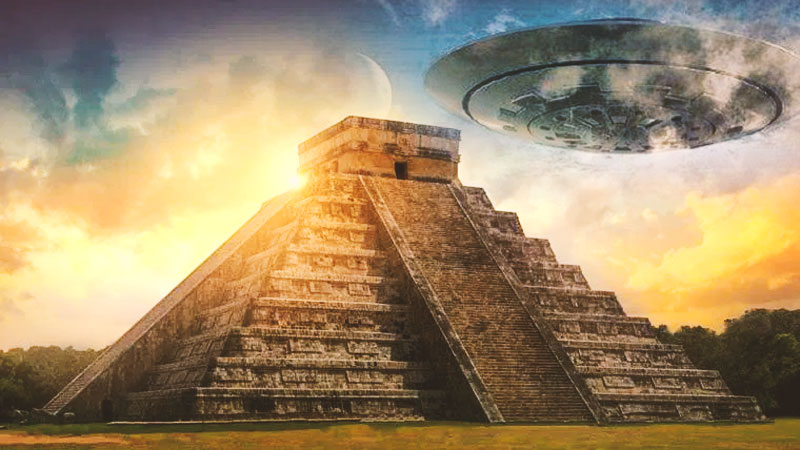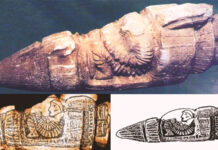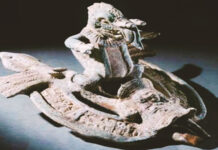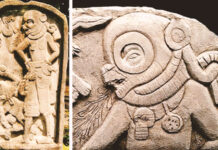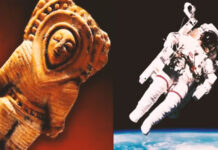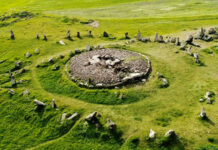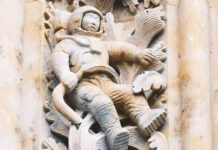The ancient Mayan civilization of Central America has surprised archaeologists and researchers for decades, while more and more intriguing discoveries related to this ancestral culture continue to be made.
The Mayans were people obsessed with astronomy, boasting a highly advanced calendar that is still needed to this day.
Although the Mesoamerican calendar was not created by the Maya, the extensions and refinements made by them were the most sophisticated.
In his culture, there was a “snake-shaped feathered god” who came down from the heavens and taught these ancient peoples about astronomy, architecture, and construction, among other things.
Known as Quetzalcoatl in the Nahuatl language of the Aztecs, or Kukulkan in Maya, this entity was highly revered and, before its departure, told the Mayans that it would one day return to Earth.

This date of his return was calculated to coincide with the end of the calendar on December 21, 2012, which caused much excitement and fear, leading many to believe that this could be the beginning day of the apocalypse.
Although this prophecy apparently did not come true, researcher Erich von Däniken says he believes that this date was calculated based on our calendar, which is somewhat ambiguous in relation to its beginning, the birth of Christ.
Von Däniken claims that there may be about 20 years of error around the day we think Christ was born, due to miscalculations in the changes of the old Julian calendar to the current Gregorian calendar, distorting our prediction of quetzalcoatl’s return. That would mean we still have a few years to see if the Mayan prediction will actually come true.
But Von Däniken disputes, saying that Quetzalcoatl’s return would not involve a Feathered Serpent descending from the sky, but potentially an extraterrestrial.
There is a recurring theme in the Mayan arts, human faces covered by what appear to be helmets with breathing apparatus in their mouths. Von Däniken says these devices that cover their mouths probably filtered air in order to prevent infections by viruses or bacteria.
The lid of King Pakal’s sarcophagus, found in the Mayan city of Palenque in present-day Mexico, is an example of this and shows a relief that can be interpreted as a pilot inside a flying machine, displaying flames and smoke coming out the back.
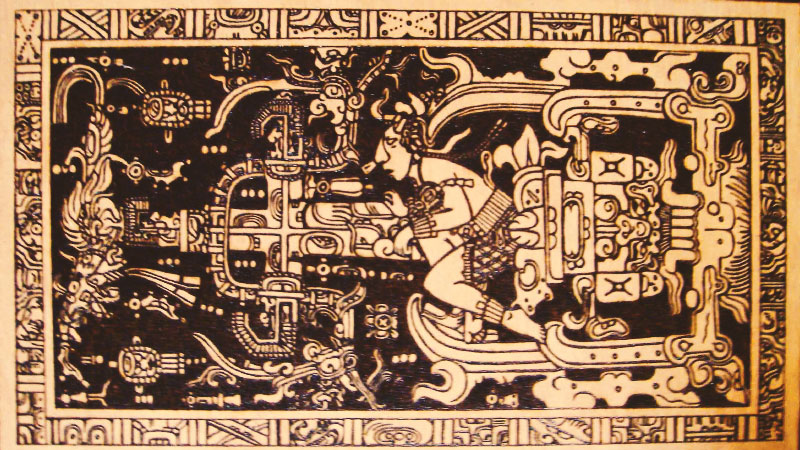
While archaeologists claim that this sculpture represents the tree of life or a descent into the underworld, two important inscriptions around the tomb detail it as a “rise to the cosmos.”
Inside the sarcophagus were found the remains of this ancient ruler, his body was significantly taller than the average height of the ancient Maya and seemed to have an unusual bone structure. Pakal is also known to have ruled the Mayans for 68 years and lived to be 80, much longer than the average life at that time.
Did the Maya Have Contacts with Extraterrestrials?
There are still unexplained discoveries made of the ancient Mayans, which inspire curiosity and fuel the idea that they may have been visited by ancient alien gods.
The city of Tikal, with its magnificent pyramids, is another anomaly that enhances the mysteries surrounding the Mayan civilization.
Discovered in a tropical forest in Guatemala, Tikal was one of the largest population and cultural centers of the Mayan civilization, full of temples, palaces, pyramids, residences, monuments and even stadiums for the ritual ball game, it was a large city with the potential to house up to 200,000 inhabitants, but with a very peculiar feature, it is located 40 kilometers from the nearest water source.
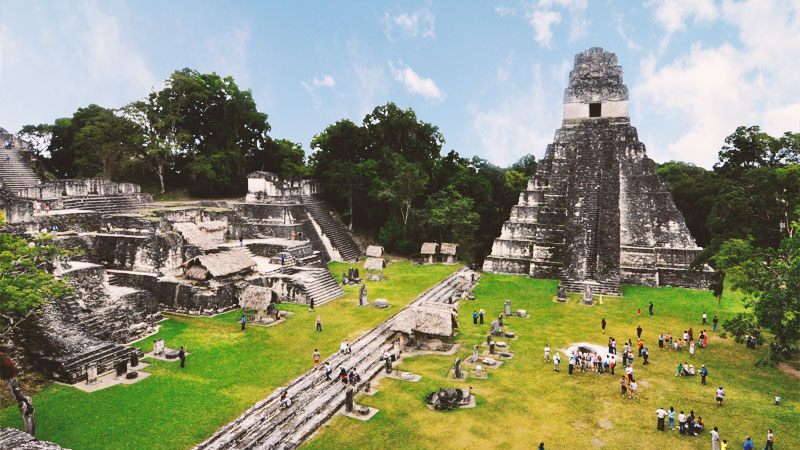
Normally, civilizations build their cities near water sources, but why would the Mayans have worked so hard to build a city of this size in such an inconvenient place?
Von Däniken points to one of the glyphs on a step pyramid, where an inscription states that Tikal was a sacred site, visited by the ancient gods that descended from the heavens.
The Maya have built impressive pyramids throughout their vast Empire, 60 of which are in Tikal and others of its best-known pyramids, including the Quetzalcoatl Temple, the Temple of the Sun, and the Temple of the Moon, are found at Teotihuacan, and these pyramids align with the three stars in the constellation belt of Orion, as well as the pyramids of Giza.
These pyramids of Teotihuacan were built under a layer of Mica, a mineral that is not found anywhere in Central America, and this material would have to be extracted and transported from the nearest mine, located in Brazil, crossing a distance of more than 4,000 kilometers, and without the luxury of the wheels.
Mica is a highly conductive type of crystal that is used in our modern technology in radio frequency capacitors and as an insulator in high voltage equipment because it has a high resistance to heat and fire, facts that make its presence in the underground of these pyramids even more intriguing.
Another recent and very interesting discovery found beneath the temples of Teotihuacan is the presence of Mercury and, just as Mica is a conductive crystal, Mercury is a conductive metal of electricity that is mentioned on the other side of the world, in the Vedas, the ancient sacred texts of India, such as the fuel source of the Vimanas, the “flying chariots of the gods”.
While conventional archaeology interprets its use only as an ancient fascination with a brilliant but highly poisonous substance for humans, others believe it may have been used on spacecraft launch pads and as a fuel source for the technology of the ancient alien gods.

